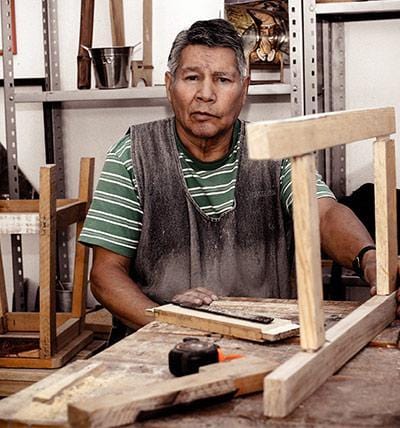In a world increasingly driven by environmental awareness and sustainability, wooden kitchenware is making a comeback as a popular choice for eco-conscious cooks. The use of wooden utensils, cutting boards, and serving dishes not only enhances the aesthetics of your kitchen but also offers practical benefits.
You can also win real money Online since there’s a great variety of choices for every wallet, and wooden kitchenware is usually cheaper than that made of stainless steel, silicone or ceramics.
In this article, we will explore the appeal of wooden kitchenware, its advantages, and tips for proper care and maintenance.
The Appeal of Wooden Kitchenware
Wooden kitchenware has a timeless charm that adds warmth and character to any kitchen. The natural grain patterns and colors of various wood types create unique, artisanal pieces that elevate the cooking and dining experience. Additionally, wooden kitchenware is an eco-friendly alternative to plastic or metal items, as wood is a renewable resource and biodegradable.
The tactile nature of wooden kitchenware also contributes to its appeal. The feel of a smooth wooden spoon or the sturdy weight of a wooden cutting board provides a sensory connection to the cooking process that synthetic materials often lack. Furthermore, the handcrafted quality of wooden kitchenware gives each piece a distinct personality, making it a delightful addition to your collection.
Advantages of Wooden Kitchenware
Gentle on Cookware: Wooden utensils are gentle on non-stick and delicate cookware surfaces, reducing the risk of scratches and damage. This helps prolong the life of your pots and pans while ensuring that they remain safe for cooking.
Heat Resistance: Wooden utensils do not conduct heat like metal counterparts, which means they stay cool to the touch during cooking. This prevents burns and reduces the risk of warping or melting, as can happen with plastic utensils.
Hygiene and Safety: Wood has natural antibacterial and antimicrobial properties that help prevent the growth of harmful bacteria. Additionally, wooden cutting boards are less likely to develop deep grooves that can harbor bacteria compared to plastic boards. Some studies suggest that wooden cutting boards may even self-heal after knife cuts, further reducing bacterial growth opportunities.
Sustainability: As mentioned earlier, wooden kitchenware is environmentally friendly due to its biodegradability and renewability. By choosing wooden kitchenware, you are supporting sustainable practices and reducing your carbon footprint.
Aesthetic Appeal: Wooden kitchenware adds a touch of warmth and elegance to your kitchen decor. The natural beauty of wood complements various design styles, from rustic to modern. Using wooden serving dishes and platters can also enhance the visual appeal of your food presentation, creating a memorable dining experience for your guests.
Types of Wood for Kitchenware
When selecting wooden kitchenware, it's essential to consider the type of wood used in crafting the items. Different woods have distinct properties that make them more suitable for specific purposes. Some popular choices include:
Bamboo: Bamboo is an eco-friendly and renewable resource that is lightweight, durable, and resistant to moisture. It's an excellent choice for cutting boards and utensils.

Maple: Maple is a dense, tight-grained hardwood that resists wear and tear. It's ideal for cutting boards, rolling pins, and spoons.
Teak: Teak is a tropical hardwood with natural oils that make it water-resistant, making it perfect for cutting boards and salad bowls.
Olive: Olive wood is prized for its beautiful grain patterns and durability. It's commonly used for utensils, bowls, and serving boards.
Cherry: Cherry is a hardwood with a warm reddish hue that darkens with age. It's great for cutting boards, spoons, and other utensils.
Caring for Your Wooden Kitchenware
To ensure the longevity and hygiene of your wooden kitchenware, follow these simple care and maintenance tips:
Hand Wash Only: Avoid putting wooden items in the dishwasher, as the high heat and water can cause warping or cracking. Instead, hand wash them with warm, soapy water and dry them thoroughly.
Regular Oiling: To prevent drying and cracking, regularly apply a thin layer of food-grade mineral oil or beeswax to your wooden kitchenware. This helps maintain their moisture content and creates a protective barrier against stains and odors.

Avoid Soaking: Do not leave wooden items soaking in water for extended periods, as this can cause the wood to swell and warp. If necessary, soak only briefly to loosen stuck-on food before washing.
Proper Storage: Store wooden kitchenware in a cool, dry place away from direct sunlight or heat sources, which can cause warping or fading.
Sanitize Cutting Boards: After using a wooden cutting board for raw meats or poultry, sanitize it with a solution of one part white vinegar to four parts water. Rinse with water and dry thoroughly.
By embracing wooden kitchenware and following proper care and maintenance practices, you can enjoy the many benefits of these natural cooking essentials. Not only will you be supporting sustainable and eco-friendly choices, but you'll also elevate your culinary experience with the warmth and charm that only wooden kitchenware can provide.
ABOUT THE AUTHOR
Olivia Poglianich
Content Strategist
Olivia Poglianich is a nomadic brand strategist and copywriter in the wooden crafts and 3D product design space who has worked with brands such as Visa, Disney and Grey Goose. Her writing has taken her all over the world, from a Serbian music festival to a Malaysian art and culture event. Olivia is a graduate of Cornell University and is often writing or reading about travel, hospitality, the start-up ecosystem or career coaching. Her latest interests are at the intersection of web3 and communal living, both on and offline.






